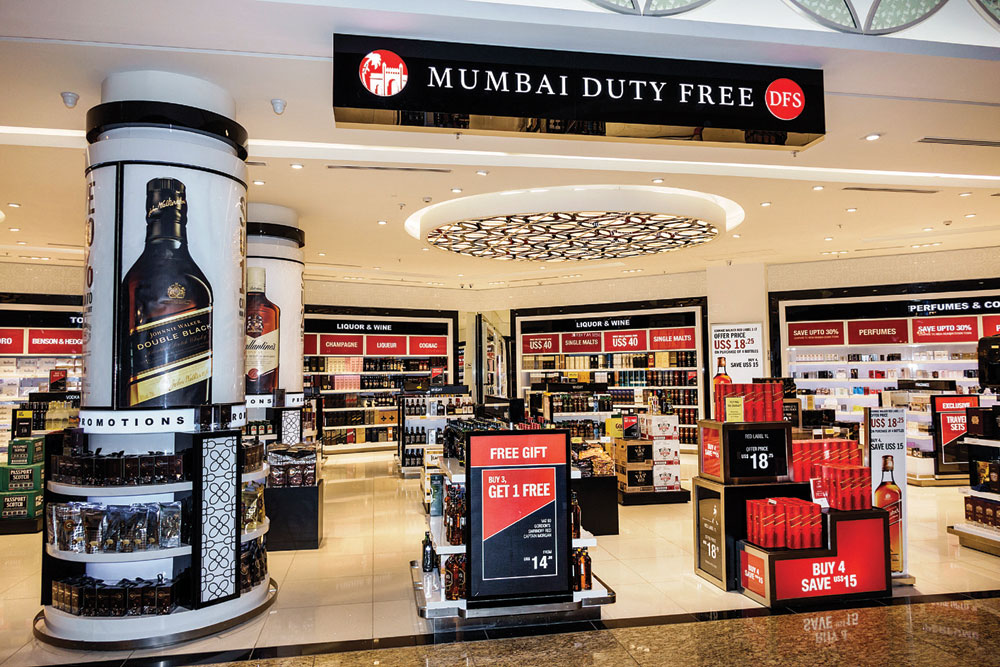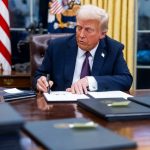The Fear of Imports
India needs a new paradigm on trade
 Dhiraj Nayyar
Dhiraj Nayyar
 Dhiraj Nayyar
Dhiraj Nayyar
 |
07 Feb, 2020
|
07 Feb, 2020
/wp-content/uploads/2020/02/Fearofimports1.jpg)
Cargo handling at Thar Dry Port in Sanand, Gujarat (Photo: Reuters)
FOR A NATION THAT HAS ENGAGED IN TRADE WITH THE REST OF the world for millennia, India is surprisingly lukewarm about exports and nearly allergic to imports. Perhaps, contemporary India is still a prisoner to its more recent past. The legacy of colonial rule which entailed almost 200 years of skewed trade—import of manufactured goods from England and export of raw materials from India—was deindustrialisation and poverty. And dependence. After Independence, the emphasis was on import substitution, a policy born out of suspicion of the nature of imports during British rule as well as pessimism about the inability of a developing country to successfully export anything other than raw materials. The latter was, in fact, the dominant strand of economic thinking globally at the time. More than 70 years on, 30 years after liberalisation, India is still ambiguous about imports. The Union Budget raised import duties on more than 100 items, including toys, furniture, leather goods, kitchenware and medical devices. On recent evidence, imports are the villain once more.
A country’s gross domestic product (GDP) is the sum of private consumption, government expenditure, private investment and exports minus imports. Viewed this way, imports are a drag on GDP. In fact, they are a contribution to another country’s GDP, another country’s jobs. Presumably, they also deter domestic competition and therefore induce path dependency that perpetuates imports instead of domestic production. But no country produces everything it consumes, nor does it consume everything it produces. Autarky is utopia. And an impoverishing one. There are always gains from trade. Even North Korea recognises that, albeit to a limited extent.
Probably, imports would not have been a bother if exports had matched or, indeed, exceeded the quantum of imports. But India has been a perennial net importer. That has meant that the current account is an additional key macroeconomic variable (apart from growth and inflation) that policymakers need to watch and worry about. Any deficit needs to be financed. Since the near default of 1991, India has used foreign investment—portfolio and direct—to build up its forex reserves. Overseas Indians are a steady source of remittances, sending back the most among diasporas in the world. The risk of default is zero but fluctuations in the current account, along with fluctuations in the capital account (portfolio investment is hot money), causes the rupee to stray from what would be a fair value.
As a deficit country, India can’t be choosy about its inflows. Excessive inflows appreciate the rupee and can exacerbate the trade deficit by making exports uncompetitive and imports cheaper. Conversely, a sudden outflow of dollars puts downward pressure on the rupee which could be inflationary (as critical imports become expensive) and greatly increase risk for those firms which have borrowed in foreign currency. Even an otherwise solid domestic macroeconomic environment (that is, high growth and low inflation) can be a potential problem on the external account because buoyant demand increases imports. It would be fair to say that policymakers would have had a greater cushion and fewer headaches if India were a surplus, not deficit, country on the current account.
Unsurprisingly, for all these reasons, it is tempting for policymakers to flirt with the idea of restricting imports. Recently, there is much rhetoric on reducing non-essential imports. In her Budget speech, Finance Minister Nirmala Sitharaman suggested that she was open to crowdsourced ideas on what these may be. One idea appeared in news reports in the weeks leading up to the Budget. Apparently, it originated in some part of the Government. It related to a proposal to restrict the amount of liquor and tobacco products that Indians could buy from duty-free shops at airports. From a sin point of view, liquor and tobacco are indeed non-essential. Locally, they are taxed heavily. But from the point of view of the trade deficit, liquor and tobacco as a whole are minuscule—the former constitutes just 0.6 per cent of all imports, the latter 0.005 per cent. The percentage that comes through duty-free shops is a fraction of that. Essential or not, restricting imports of liquor and tobacco would make no dent in the deficit. In that sense, restricting such imports is ‘non-essential’.
25 per cent of India’s total imports come from just oil and oil products. They are the foundation of its energy requirements. Restricting imports is not an option. The only way out is to increase domestic production
To make a distinction between essential and non-essential imports is problematic. Consider the following. Almost 25 per cent of India’s total imports come from just oil and oil products. They are the
foundation of India’s energy requirements. So, they are essential. The variability of oil prices is the most important reason for movements in the current account deficit and the level of the rupee. And so, the aim should be to make them non-essential. Restricting imports is not an option. The only way out is to increase domestic production, but India’s domestic oil production has been falling annually for almost a decade, despite considerable geological potential. It is domestic policy which needs to address this.
INDIA’S SECOND-LARGEST ITEM OF IMPORT (IN TERMS OF value) is gold, constituting over 6 per cent of imports. Is gold essential or non-essential? Given that it is an important instrument of saving for most Indian households, it is essential. But that investment isn’t productive for the economy, so it is non-essential too. Restricting imports has been attempted in the past by raising duties, but it only facilitates smuggling and the creation of a black market. Again, like oil, the only option is to produce gold domestically. China, another big consumer of gold, was a huge importer 30 years ago. Today, it is not because of aggressive domestic policy reform and production. In the list of largest imports, diamond and coal follow oil and gold. India should not be importing any coal given its massive but underexploited reserves. The land of the Kohinoor hardly produces many diamonds despite potential. In sum, the above items, which constitute anywhere between 40 per cent and 50 per cent of total imports, can, and should, be import-substituted. It would make a big difference. The good news for orthodox economists is that this doesn’t require a clampdown on imports. It needs domestic policy reform.
That logic needs to be extended to any discussion on import substitution in other sectors. The key to successful import substitution is not protection via trade policy. It is a conducive policy environment. However, strategic trade policy could play an important, temporary role as long as it is viewed as a complement to domestic policy reforms and not a substitute. In India, many large industries are globally competitive at the plant level but are not competitive at the economy level because of the huge cost of logistics. Other large industries are constrained by policies which do not enable them to procure cheap inputs in sufficient quantity— the non-availability of coal or cheap power is a problem for many heavy industries. In such situations, some protection is necessary to provide a level playing field until the Government has fixed the elevated cost structure that is a direct result of the policy environment. In the case of small-scale industry, where much of the recent hikes in import duties are directed, it is not clear whether duty hikes will create a globally competitive industry. It is true that labour-intensive sectors like furniture, toys and footwear face severe competition from China. Tariff hikes may enable them to subsist, but the only way they can become truly competitive is by scaling up. For that, policy must stop incentivising manufacturers to remain small. In the absence of that, consumers will suffer as they did before 1991 when many sectors were reserved for small-scale industries but failed to produce high-quality, affordable goods.
There is always a statutory warning that accompanies the use of strategic trade and industrial policy. If not time-bound and unaccompanied by competitiveness-enhancing reforms, it leads to inefficiency and rent-seeking a la pre-1991.

Of course, any fruitful debate or discussion on what to do about imports must necessarily feature exports. Indeed, most successful industrialising countries have been net exporters at crucial points in their economic trajectory. The East Asian Model, including China, is fundamentally an export-led path to prosperity. For most East Asian countries, with the exception of China, there was no other route to rapid prosperity—domestic markets were simply too small. China had a big population and potentially a big market but when it began its export-led strategy, the domestic market simply didn’t have the purchasing power or might that the world market did.
Admittedly, in Japan, South Korea, China and other countries, import substitution was part of the early strategy. Domestic firms needed the space to grow. However, protection from imports was accompanied by domestic policy reform. And the real reason limited import substitution succeeded in parts of East Asia was because protection in the domestic market against foreign competition came with a key performance indicator—the need to conquer world markets. Once that was achieved, protection was quickly unnecessary. China used its accession to the World Trade Organization, 20 years after it first began opening up its economy, as an effective stick on its firms.
Since 1991, India has failed to achieve desired outcomes using trade policy, not while reducing barriers and not even while increasing them in recent years. The former did not lead to the creation of a competitive manufacturing sector, nor will the latter. The narrative must shift from an obsession with imports to a clear focus on net exports (not just exports).
There is some pessimism about the prospects of India emerging as a manufacturing exports powerhouse. But there is an opportunity with China vacating some of the space for labour-intensive manufacturing. The opportunity is also a challenge given the growing global sentiment against free trade and the general slowdown in the global economy. India will not have the playing field China did between 1980 and 2010. Also, the onset of the fourth industrial revolution may change the nature of production and global value chains. But the window for old-fashioned industry may still remain open for a decade. India must push domestic reform to make this happen. Yet it cannot shut out imports. In today’s global trade, the movement of a majority of goods takes place in global and regional value chains, so every export requires imports. That is also the reason India cannot stay out of every regional trading arrangement forever.
The one dimension of trade not fully understood in the discourse in India is trade in services. There is a general belief that while China is more competitive in manufacturing, India is more competitive in services. While the former is true, the latter is not. In fact, China’s share of the global services trade is higher than India’s. In India, the view of services tends to get restricted to the very impressive IT services sector which has indeed been a world-beating sector. Or, to the movement of skilled labour, again mostly in IT but also in other sectors like hospitality and healthcare. There is competitive advantage because of wage arbitrage. But services encompass a very vast space, some of which are not tradable. As IT services lose steam, India needs to make up ground in other key services such as education, health and tourism. Indian students spend around $5 billion a year studying in overseas universities, making us large importers of education services. A country with an English language-based system of education and the presence of some (but not enough) world-class institutions of higher education should have a comparative advantage in providing education services to the world. The Budget’s intent to permit foreign direct investment in education is a good move. A country with India’s vast heritage—history, culture and nature—should attract many more tourists than it does. Even its domestic tourists make a beeline for overseas destinations, making the country an importer of tourism services. The medical tourism industry may have done better than education but its potential is much larger. These are sectors in which India can make rapid strides and they should become a positive on the net exports balance. Given their employment intensity, they would be a very good complement to a growing manufacturing base. Perhaps they could even substitute for it.
India needs a new paradigm on trade. For success, it must be closely tied to the domestic market reform agenda. By itself, neither trade liberalisation nor trade protectionism can create a globally competitive India. We know that from our recent history. A competitive India will not fear imports and may finally become an export power. A net gain.

/wp-content/uploads/2025/01/Cover-Indian-Music.jpg)











More Columns
Israel-Hamas Ceasefire: Five things to watch out for in the days to come Rahul Pandita
Trump’s First Day at Work Siddharth Singh
What Are the Natural Solutions for Acidity and Bloating Dr. Kriti Soni